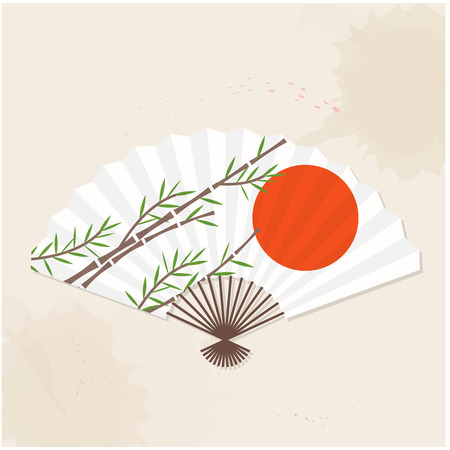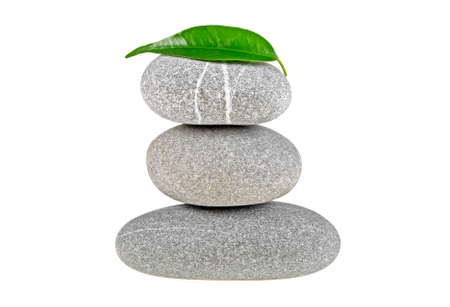What is Feng Shui? An Introduction
Feng Shui is an ancient Chinese practice that focuses on the relationship between people and their environments. The words “feng” and “shui” mean “wind” and “water” in Chinese, two natural elements that have always been essential to human life. The idea behind feng shui is simple: our surroundings affect our mood, health, and even our luck. By arranging spaces thoughtfully, we can create harmony, boost energy, and bring more positivity into our lives.
The Philosophy Behind Feng Shui
At its core, feng shui is based on the belief that everything in the universe is connected by invisible energy called “chi” (sometimes spelled “qi”). This energy flows through nature, buildings, and even our bodies. When chi moves freely and smoothly, it brings balance and well-being. If it gets blocked or stagnant, problems can arise. Feng shui aims to guide this flow of chi using design choices, colors, furniture placement, and natural elements.
Key Principles of Feng Shui
| Principle | Description |
|---|---|
| Yin and Yang | The balance of opposite forces (light/dark, soft/hard) creates harmony in a space. |
| The Five Elements | Wood, fire, earth, metal, and water are used in décor to encourage healthy energy flow. |
| Bagua Map | A tool for mapping out areas of a home or office to enhance specific aspects like wealth or relationships. |
| Chi Flow | Arranging rooms and furniture to allow positive energy to circulate easily. |
Why Has Feng Shui Captivated People for Centuries?
People have practiced feng shui for thousands of years because it offers practical ways to improve everyday life. Whether seeking better health, more prosperity, or simply a peaceful home, feng shui gives clear guidelines. In recent decades, its ideas have spread far beyond China—today you’ll find Americans incorporating feng shui into homes, offices, gardens, and even city planning.
2. Feng Shui in Ancient China: Origins and Evolution
The Birth of Feng Shui: A Glimpse into Ancient Traditions
Feng shui, which means “wind” (feng) and “water” (shui), has its roots deep in the history of ancient China. This practice began over 3,000 years ago as people searched for ways to live in harmony with their environment. Early Chinese communities believed that the flow of energy, or qi, in nature could affect health, fortune, and happiness. They observed how mountains, rivers, and winds shaped life around them and started developing guidelines to harness these natural forces.
Early Uses: From Graves to Homes
Originally, feng shui was used mainly for selecting burial sites. The ancient Chinese believed that the resting place of ancestors could influence the well-being of future generations. Over time, these ideas expanded from gravesites to building homes, temples, and even entire cities. Here’s a quick look at how feng shui was applied in different areas:
| Application | Purpose |
|---|---|
| Burying Ancestors | To bless descendants with good fortune |
| Building Homes | To bring health and prosperity to families |
| Designing Cities | To ensure safety and growth for communities |
| Temples and Palaces | To connect with spiritual energies and power |
The Influence of Chinese Cosmology
The development of feng shui is closely tied to Chinese cosmology—the ancient beliefs about the universe’s structure. People looked to the stars, seasons, and natural cycles for guidance. Two key concepts shaped feng shui:
- Yin and Yang: This idea describes how opposite forces (like night and day or hot and cold) are interconnected. Good feng shui creates a balance between these energies.
- The Five Elements: Wood, fire, earth, metal, and water are seen as the building blocks of everything in the universe. Arranging spaces to reflect a healthy mix of these elements was thought to support well-being.
The Role of Feng Shui in Daily Life
Feng shui wasn’t just for big decisions or grand buildings—it became part of everyday life in ancient China. People chose where to plant crops based on sun and wind patterns. Families arranged their furniture to welcome positive energy at home. Even today, many traditional Chinese festivals and rituals include elements based on feng shui principles.
Key Takeaways from Ancient Practices
- Harmony with nature was central to daily living.
- Decisions were guided by both practical observation and spiritual beliefs.
- Feng shui offered a roadmap for creating supportive environments—whether for individuals or whole communities.
This rich history set the stage for feng shui’s journey across centuries—and eventually across continents—to become what it is in modern America.

3. Feng Shui’s Journey to the West
Feng Shui began as a Chinese tradition, but its influence has traveled far beyond China’s borders. Let’s explore how this ancient practice made its way from East Asia to the heart of American culture.
The Spread Across Asia
Before reaching the Western world, Feng Shui was adopted in several Asian countries. Its principles were adjusted and blended with local customs, creating unique versions in places like Taiwan, Hong Kong, Singapore, Korea, and Japan.
| Country | How Feng Shui Was Adopted |
|---|---|
| Taiwan & Hong Kong | Became a core part of real estate and business decisions. |
| Singapore | Used in urban planning and home design for harmony. |
| Korea & Japan | Blended with native beliefs about nature and energy flow. |
The Arrival in the West
Feng Shui started gaining attention in the West during the late 19th and early 20th centuries. Chinese immigrants brought their traditions to America, especially in cities like San Francisco and Los Angeles. At first, Feng Shui was practiced quietly within these communities to create harmony in homes and businesses.
The Role of Immigration
As more Chinese immigrants settled in America, they continued to use Feng Shui in their everyday lives. Over time, non-Chinese Americans became curious about these practices, especially as interest in Eastern philosophies grew in the 1960s and 1970s.
Popular Culture and Mainstream Adoption
In the late 20th century, Feng Shui began appearing in American magazines, books, and television shows. Interior designers and architects started incorporating Feng Shui ideas to make spaces feel more inviting and balanced. Today, you can find Feng Shui tips everywhere—from real estate listings to lifestyle blogs.
| Decade | Main Event in Feng Shui’s American Journey |
|---|---|
| 1960s-70s | Growing interest in Eastern philosophies; first English books published on Feng Shui. |
| 1980s-90s | Mainstream media coverage; interior designers promote Feng Shui concepts. |
| 2000s-Present | Online courses, apps, and widespread tips for home and office design. |
The Modern American Perspective on Feng Shui
Today in America, Feng Shui is often seen as a practical tool for improving well-being at home or at work. While some people follow traditional rules closely, others simply use basic ideas—like keeping spaces tidy or placing furniture for better “energy flow.” This blend of tradition and modern style shows just how far Feng Shui has come on its journey from ancient China to today’s America.
4. Feng Shui in Modern America: Interpretation and Practice
How Feng Shui Arrived in the United States
Feng shui began to capture American interest in the late 20th century as people looked for new ways to create balance and harmony in their lives. With increased cultural exchange and globalization, Americans became more open to Eastern philosophies, especially those that promise wellness, prosperity, and peace of mind.
Adapting Feng Shui to American Homes
Unlike traditional Chinese feng shui, which often focuses on compass directions and precise calculations, many Americans take a more relaxed approach. The emphasis is usually on making spaces feel inviting, uncluttered, and positive. Here are some popular ways feng shui is adapted in American homes:
| Feng Shui Element | Traditional Use | Modern American Adaptation |
|---|---|---|
| Bagua Map | Aligning life areas with compass directions | Used as a room layout guide regardless of direction |
| Water Features | Ponds or fountains for wealth & flow | Small tabletop fountains or aquariums for relaxation |
| Color Choices | Specific colors for each element/area | Selecting calming or energizing colors based on mood preference |
| Decluttering | Clearing obstacles for good energy (Qi) flow | Simplifying interiors for a tidy, peaceful atmosphere |
| Plants & Nature | Bamboo, lucky plants for growth & health | Potted plants and succulents for fresh air and style |
The Influence of Interior Design Trends
Many modern interior designers in America incorporate feng shui principles, even if indirectly. Open floor plans, natural lighting, indoor plants, and minimalism all echo core feng shui ideas. Designers might suggest placing furniture so it’s easy to move around, or avoiding sharp corners that “cut” the flow of energy in a room.
Popular Feng Shui-Inspired Trends in America:
- Entryways: Keeping front doors clear of clutter to welcome positive energy.
- Cohesive Color Palettes: Using color psychology to create calm or energize specific spaces.
- Multi-functional Spaces: Designing rooms that adapt to different needs while maintaining order.
- Sustainable Materials: Choosing eco-friendly materials that support well-being.
- Nature Elements: Incorporating wood, water, stone, and greenery indoors.
The Workplace and Lifestyle Integration
Apart from homes, feng shui principles are now used in American offices and businesses. Companies may arrange desks for better communication and productivity or add plants to reduce stress. Some people even apply feng shui tips when choosing car colors or organizing digital workspaces.
A Quick Look at Feng Shui Applications Across American Life:
| Setting | Main Feng Shui Focus |
|---|---|
| Home Entryway | Cleansing energy with decor and organization |
| Living Room | Circular seating arrangement for harmony and conversation flow |
| Office Desk | Positioning desk to face the door (“command position”) for confidence and control |
| Bedroom | Avoiding mirrors facing the bed; placing bed against a solid wall for support |
| Lifestyle Choices | Simplifying possessions; focusing on wellness through mindful design choices |
The American interpretation of feng shui is flexible and creative. It’s less about strict rules and more about feeling good in your space, reflecting both ancient wisdom and modern values.
5. Debunking Myths and Addressing Criticism
Common Misconceptions About Feng Shui in America
Since feng shui became popular in the United States, many myths and misunderstandings have surfaced. Some people think feng shui is just about moving furniture or decorating with lucky objects, while others see it as a superstition or even a form of magic. In reality, feng shui is a complex system rooted in ancient Chinese philosophy that focuses on how our surroundings influence our well-being.
Popular Myths vs. Actual Practice
| Myth | Reality |
|---|---|
| Feng shui is only about interior design | It’s about creating harmony between people and their environment, not just decoration |
| It guarantees wealth and success | Feng shui aims to support positive energy flow, but doesn’t promise specific outcomes |
| You must follow strict rules for results | Practitioners often adapt principles to fit modern lifestyles and homes |
| It’s a religion or supernatural practice | Feng shui is based on environmental awareness and traditional Chinese beliefs, not worship |
Skepticism and Scientific Debate in American Society
In the U.S., some people are skeptical of feng shui because its benefits can be hard to measure scientifically. Critics argue that there’s little proof that rearranging spaces leads to better health or luck. On the other hand, supporters say that making thoughtful changes to our environment—like improving lighting, reducing clutter, or incorporating natural elements—can boost mood and comfort, which science does recognize as important for well-being.
How Practitioners Respond to Criticism
- Blending Tradition with Modern Science: Many American feng shui consultants combine traditional principles with evidence-based design ideas, such as biophilic design (using nature indoors) and ergonomics.
- Focusing on Practical Benefits: Rather than promising miracles, practitioners highlight stress reduction, better organization, and increased comfort as tangible benefits of good feng shui.
- Respecting Personal Beliefs: Practitioners encourage clients to use what feels right for them, without pressure to adopt unfamiliar customs.
The Ongoing Conversation: East Meets West
The debate around feng shui in America shows how cultural traditions can evolve as they move across borders. While some Americans remain doubtful, many others find value in feng shui’s holistic approach to living spaces. By balancing ancient wisdom with today’s scientific understanding, feng shui continues to grow and adapt within American culture.

